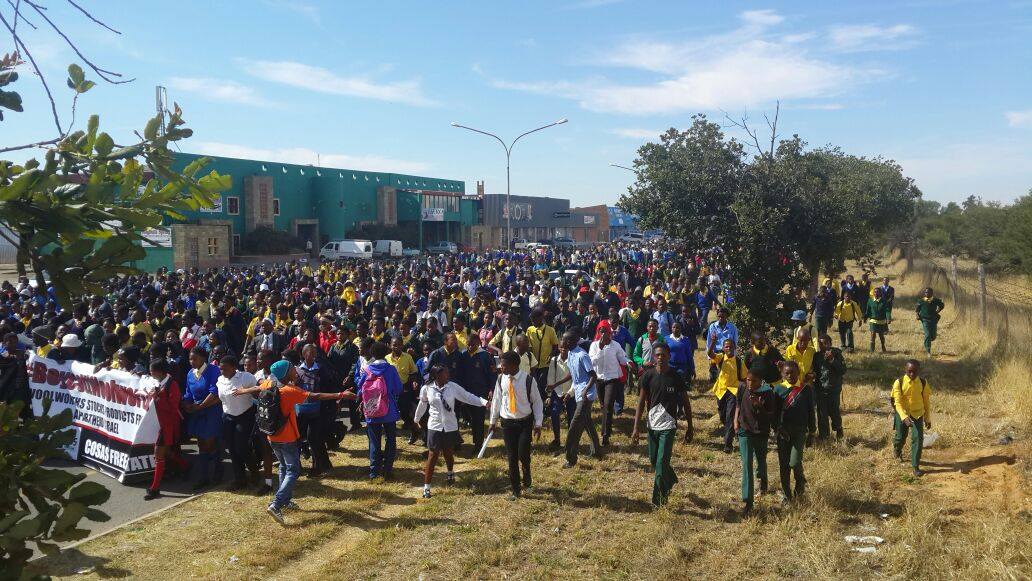Tag: Demonstration
-
Hundreds of unarmed demonstrators confront live fire at Kafr Qaddum on Nakba Day
15th May 2015 | International Solidarity Movement, Huwarra Team | Kafr Qaddum, Occupied Palestine Today (15th of May), during the Nakba day demonstration in Kafr Qaddum, four young men were shot with live ammunition in their legs. One of the men got a serious bone fracture. Apart from the live ammunition being shot from all directions, Israeli forces…
-
South African students protest against Woolworths
15th May 2015 | Congress of South African Students | Welkom (Free State), South Africa On Nakba Day more than 10 000 South African School Learners March Against Woolworths over Israel Trade. More than 10 000 South African school learners protested earlier today against Woolworths Stores over its Israeli trade. The #BoycottWoolworths protest was led by the Congress…
-
Open the gate, bring down the wall!
08th May 2015 | International Solidarity Movement, Al Khalil Team | Al-Zaim, Occupied Palestine The villagers of Al-Zaim held their third demonstration today in front of the gate in the apartheid wall that separates them from East Jerusalem. Peaceful demonstrators were met by a large number of occupation forces and agreement was eventually reached to…



